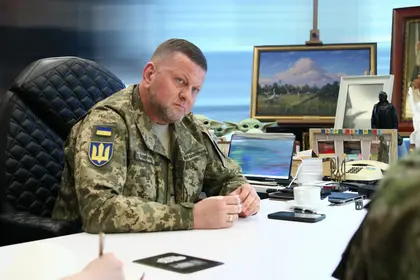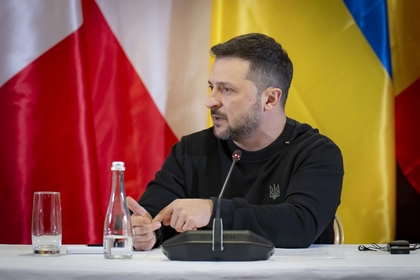The war between Russia and Ukraine is entering a new, tiring and long-lasting phase, which involves battles where both sides are dug in and not moving much, Valery Zaluzhny, the Commander-in-chief of the Armed Forces of Ukraine, has written in an article for The Economist.
Zaluzhny said he is concerned because this shift toward a positional war plays to Russia’s advantage, enabling them to rebuild their military strength. This, in turn, poses a significant threat not only to the Ukrainian Armed Forces (AFU) but also to the sovereignty of Ukraine as a nation.
JOIN US ON TELEGRAM
Follow our coverage of the war on the @Kyivpost_official.
“Russia should not be underestimated. It suffered heavy losses and spent a lot of ammunition,” Zaluzhny wrote. “But it will have an advantage in weapons, equipment, missiles and ammunition for a long time. Its defense industry is increasing production despite unprecedented sanctions...”
“A positional war is a prolonged war that carries huge risks for the Ukrainian Armed Forces and the state. New, innovative approaches can turn this war of positions into a war of maneuvers again,” he added.
From his perspective, Ukraine must urgently acquire essential military capabilities and advanced technologies to secure victory in this evolving war.
WHAT EXACTLY?
Air Force Modernization
Ukraine’s Armed Forces, as mentioned by Zaluzhny, need to enhance their military capabilities and technologies, with a primary focus on the Air Force. Control of the skies is vital for large-scale ground operations, and Ukraine’s initial air force strength of 120 combat aircraft has been significantly reduced.

Ukraine’s Lost 40% of Kursk Region Gains Official Says
The Russian Air Force maintains an advantage and continues to bolster its attack squadrons, posing challenges to Ukrainian advances.
The use of drones, both for reconnaissance and attacks, should be a part of Ukraine’s strategy, employing bait and attack drones to overwhelm Russian air defense systems and employing hunter drones to counter Russian drones.
Electronic Warfare
Electronic warfare, including jamming of communication and navigation signals, is the second priority, according to Zaluzhny.
Russia has invested heavily in modernizing its electronic warfare capabilities, outpacing the United States in some respects. Ukraine needs to expand its own electronic security systems and access allied electronic intelligence data to counter Russian jamming efforts effectively, he writes.
Counter-Battery Fire
Zaluzhny said the third task to address is counter-battery fire, primarily directed at defeating enemy artillery.
In modern warfare, artillery and rocket fire constitute a significant portion of military operations, and Ukraine’s initial success in this area has been challenged by improved Russian electronic warfare and counter-battery capabilities.
Ukraine should work on creating local GPS fields to enhance the accuracy of precision-guided projectiles in jamming conditions, utilize kamikaze drones to target Russian artillery and seek better artillery and reconnaissance equipment from allies.
Mine Clearance Technologies
The fourth task involves developing mine clearance technologies to overcome Russian minefields, which extend for considerable distances in some areas.
According to Zaluzhny, Ukraine requires advanced sensors to detect mines, smoke generation systems to obscure mine clearance operations, and innovative methods for safely breaching minefields.
All these technologies can significantly aid in mine clearance efforts.
Increase in Reserves
The fifth and final priority pointed out by Zaluzhny is building up reserves to counterbalance Russia's manpower advantage.
Political concerns and limitations hinder Russia's ability to mobilize its population fully, but Ukraine faces its own challenges in preparing reserves, Zaluzhny wrote.
Ukraine is working on reforms such as a unified conscript register, expanding the pool of eligible citizens for training and mobilization, and implementing a "combat internship" program to enhance training.
Kremlin Comments
In its response to Zaluzhny’s Economist article, the Kremlin on Thursday denied a claim from Kyiv’s most senior military official that the nearly two-year conflict in Ukraine had reached a stalemate.
“No, it has not reached a deadlock,” Kremlin spokesman Dmitry Peskov told reporters, adding: “Russia is steadily carrying out the special military operation. All the goals that were set should be fulfilled.”
Moscow didn’t mention the “special military operation” goal of taking Ukraine’s capital of Kyiv in a matter of days or weeks or its goal of limiting NATO expansion.
You can also highlight the text and press Ctrl + Enter






